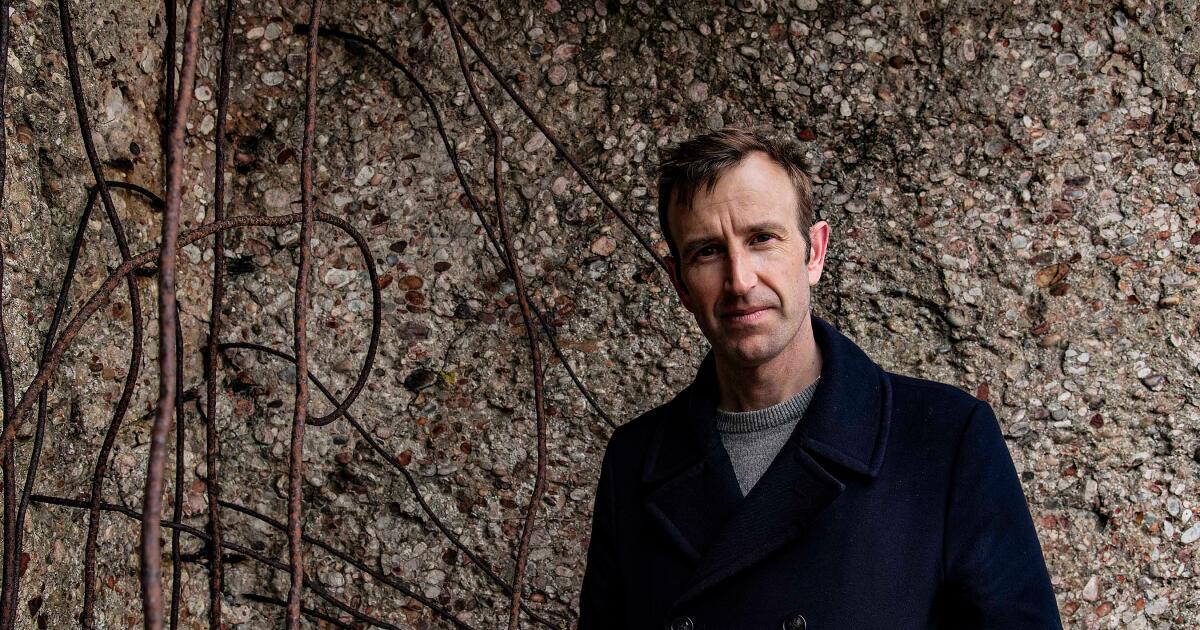From the second line of Robert Macfarlane’s new ode to nature, I was caught in the current, rushed along the rapids of his exploration into a question with fundamental consequences: Is this river — that river, any river — alive? Not simply as an ecosystem or a home to animals, but is a river a living being itself? If so, does a river have memory and intention? What about needs or rights? Each question begets another, sweeping Macfarlane, his companions and now his readers along on that tide of thought.
Rivers do not resemble life forms as we’re used to them, though the language of rivers suggests they could. As bodies of water, rivers already have headwaters, mouths and arms. Seen from above, meandering rivers resemble vascular systems or neural networks. So why not assume they have thoughts, feelings and needs too? “For those who, like me, have been largely raised on rationalism, to imagine a river is alive in a way that exceeds the sum of the lives it contains is difficult, counterintuitive work,” the author writes, though it seems early into the book that he has already made his leap from rationalism to animism, at least for the rivers he sees.
“Words make worlds,” he reflects. “In English, we ‘it’ rivers, trees, mountains, oceans, birds, and animals: a mode of address that reduces them to the status of stuff.” Part of his quest, then, is to shift his thinking: If rivers — and the rest — are no longer an it, can they be a who? If so, then the river closest to my home, the Los Angeles River (Paayme Paxaayt as named by the Tongva), is no longer a river that flows but a river who flows. Does that change the river for me? That I have to keep fighting my computer’s grammar settings to ignore the “error” of “river who flows” suggests how far we have to go. The thingness of nature is deeply set in Western thought; recalibration will be complex.
Macfarlane’s title question takes him to three countries, each home to threatened rivers: Los Cedros in Ecuador, Adyar River in India and Mutehekau Shipu (also known as Magpie River) in Canada. At each visit, he considers what the rivers give to us and what we give to them — an exchange of nurturing for poison, usually. Human-led danger circles each in various forms: logging, pollution, dams. One of the rivers is already considered dead, the other two are still vibrantly alive.
In each country, Macfarlane is accompanied by the river’s allies, people who already see each water body as living and often live nearby as neighbors. These stories are peppered with rights of nature discussions exploring how Ecuador and New Zealand have extended to certain rivers legal rights to flow uninterrupted and established guardianship councils that attempt to speak for the rivers. He and allies consider how activists in India and Canada are trying to do the same without risking reducing these legal protections to performative nonsense.
While those discussions could be weighed down by politics, Macfarlane’s touch is deft, giving us exactly enough to consider the question while also showing us how this is not just about rivers but about us. Sick rivers don’t end at their banks, but spread into communities. It’s no coincidence that my neighborhood, Frogtown, is no longer home to any frogs despite easy access to the river. (Once, before the river was attacked, communities of toads hopped through yards and sang choruses in the night.) As I read this book, I went on long, ambling walks along the L.A. River, trying to see it as Macfarlane might. Perhaps he would describe it as sick with pollution, or jailed by concrete channeling. Would he see Paayme Paxaayt as hopeful? Defiant? Or doomed?
Macfarlane’s writing is as beautiful as the rivers and the hope he’s describing. Everywhere he looks is art — a “sunset has slaughter in it,” a “cloud-forest is a steaming, glowing furnace of green,” a sun rises “red as a Coke can over the ocean” and “faced with a river, as with a god, apprehension splinters into apophasis.” His paragraphs flow like the water he admires: sometimes tranquil and easy, other times a tumbling, mixing, effervescent torrent directed by commas, never promising a full stop. But don’t let his elegiac prose divert you — there is a dedicated scholar at work here. There’s the obvious proof: a detailed glossary, and a notes and bibliography section that runs over 30 pages. Then there’s the more subtle proof: The whole book is a weighty question whose answer impacts disciplines like law, business, history and philosophy. Macfarlane takes us through each like creeks feeding into a stream. The philosophical underpinning sees the most impressive transformation. He does his own unlearning of anthropocentrism on the page through his intense experiences with these three rivers, concluding only when the rivers are done with him: “I am rivered.” He is showing us the way to do our own unlearning, too.
How we view our relationship to nature is a vital question that people around the world are reconsidering. Climate change has disrupted many natural patterns, and we’re waking up to the reality that solutions will involve more than reusable water bottles and biodegradable straws. Here in L.A., our year kicked off with devastating fires that we are still recovering from. The aftermath begs us to really consider the questions Macfarlane is asking. Are our rivers alive? What about our forests? If so, how are we going to treat them?
Castellanos Clark, a writer and historian in Los Angeles, is the author of “Unruly Figures: Twenty Tales of Rebels, Rulebreakers, and Revolutionaries You’ve (Probably) Never Heard Of.”

